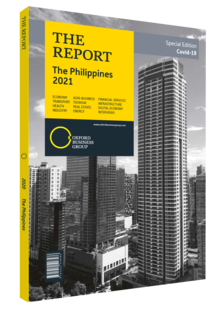How is the Philippines' BPO sector faring amid global business disruption?
Business process outsourcing (BPO) was disrupted by fluctuations in demand and restrictions on the mobility of workers during the early part of the Covid-19 pandemic, but there are signs that new engines of growth are emerging that could bode well for the longer-term development of the sector.
BPO is frequently described as one of the two pillars of the Philippine economy, alongside remittances. As BPO revolves around international companies delegating operations to the local workforce, it has long been regarded as a vital source of foreign exchange and high-value jobs for the country’s English-speaking and digitally literate population. As a result of its importance, a dramatic slowdown in BPO activity would have serious implications for the wider economy.
After the start of the pandemic, industry players quickly implemented remote work and reduced the length of shifts. This created capacity challenges in the early stages, alongside the fact that some BPO firms had to contend with declining demand for their services due to project deferments and cancellations.
Although a surge in flight cancellations, e-commerce orders and financial service enquiries temporarily boosted activity for operators with contact centres in the Philippines, a significant proportion of BPO work undertaken is contracted from the US. The North American country has suffered the world’s highest number of Covid-19 infections and a rise in unemployment, highlighting the need for the Philippines to diversify its clients to hedge against future disruptions.
Upskilling & Evolution
While a slowdown in US consumer activity is likely to have a negative impact on the Philippines’ BPO sector in the short term, the Asian country can look towards building competitive advantages beyond English-language proficiency and customer service skills to position itself for the next wave of expansion in the global BPO industry.
Basic call centre services are responsible for 50-60% of customer contact operations, but demand for such services was already under pressure from artificial intelligence-powered chatbots before the pandemic. In recognition of this threat, in 2016 the IT and Business Process Association of the Philippines (IBPAP) unveiled Roadmap 2022, which aims to prepare its members for a transition towards automated services, as well as more technical and creative jobs. If managed properly through targeted investments in technology and upskilling, IBPAP forecasts that close to 75% of the workforce will be mid- to high-skilled positions by 2022, compared to just 53% in 2016 “We see intelligent process automation and analytics as the next drivers of growth,” Beng Coronel, president of the IT and BPO firm Pointwest Technologie, told OBG. “Now is the time to prepare in terms of capability building and developing services that will be needed moving forwards. More than ever, cost will become a major factor in any decision that a business leader makes, and this is where our country can have an advantage: innovation at competitive cost.”
Emerging Segments
One encouraging sign is the growth of segments such as health care, gaming and animation services, which fall under the IBPAP roadmap.
Prior to the outbreak, the Philippines had established itself as a leading offshore/nearshore location for health care service delivery. This refers to the practice of health care providers or organisations outsourcing some or all business processes to a remote operator.
In a pre-Covid-19 November 2019 assessment IBPAP forecast that revenue growth in the health segment would be between 7.3% and 10.8% through to 2022, while gaming and animation would see revenue growth of between 7.3 to 12.3%. Meanwhile, contact centres are projected to see revenue growth of between 3.3% and 7.4% over the same period. Notably, as the pandemic increased worldwide demand for health care services and home entertainment options, it is anticipated that growth in these segments will be even higher than the pre-pandemic assessments predicted.
You have reached the limit of premium articles you can view for free.
Choose from the options below to purchase print or digital editions of our Reports. You can also purchase a website subscription giving you unlimited access to all of our Reports online for 12 months.
If you have already purchased this Report or have a website subscription, please login to continue.

